
Ashen
-
Posts
654 -
Joined
-
Last visited
Content Type
Profiles
Forums
Store
Help Articles
Posts posted by Ashen
-
-
No sugar for me unless I am having a Cafe Cubano. The stall is long gone but there used to be Cuban guy selling coffee at one of the farmers markets here and he would also make you a Cubano if you wanted. He actually added the raw sugar right inside the filter basket with the grounds before pulling the shot.
-
-
Apparently corn on pizza is a big thing in Japan too, although they also add Mayonnaise.
http://www.huffingtonpost.ca/entry/mayonnaise-pizza-dominos_n_2495421
-
 1
1
-
-
Sri Lanka I guess since my favourite at the moment is Tetley Pure Ceylon black tea..
-
52 minutes ago, Dave the Cook said:
For those following along, here's the nut graf (emphasis mine):
Heat does not kill botulinum spores. So, whether raw or roasted: refrigerated, four days maximum.
The toxins produced by the bacteria can be neutralized by proper heating even though the spores are heat resistant. I would still follow that 4 day rule for something like garlic or other things under oil, but for peace of mind about home canned items , a thorough heating is still a good idea.
http://www.who.int/mediacentre/factsheets/fs270/en/
"Though spores of C. botulinum are heat-resistant, the toxin produced by bacteria growing out of the spores under anaerobic conditions is destroyed by boiling (for example, at internal temperature greater than 85 °C for 5 minutes or longer). Therefore, ready-to-eat foods in low oxygen-packaging are more frequently involved in cases of foodborne botulism."
-
-
3 hours ago, Norm Matthews said:
It's been around a year since I did a brisket in the smoker. It only took 7 hours. I was surprised it finished so soon. I smoked it with apple wood at 270 most of the time. It got up to 300 at the end though. I just realized that my smoker just turned 5. BTW prime brisket at Costco was only $3.29 a pound.
Is that an oklahoma joe smoker?
-
 1
1
-
-
thanks for that link.. I just took a quick glance but I can tell I will get lots of entertainment from it.

-
go with the wrap Okanagan suggested with a splash of apple juice. if the dried portion doesn't come all the way back , just tell everyone it is "Bark", which is highly prized in BBQ . Sell it as a great feature .

-
 5
5
-
-
breakfast at the cafe at the little airpark here. a sausage and hashbrown(they call them potato pancakes) already missing.
.. love that they will get you some sriracha if you ask. pretty sure the bread and definitely the potato pancakes and regular pancakes are scratch/housemade.
g

-
 7
7
-
-
awesome I love hearing about savoury uses for rhubarb.
-
On 04/09/2016 at 3:16 PM, kayb said:
My eldest, however, will not eat them because, she contends, they use Liquid Smoke, which is another one of her migraine triggers.
I don't eat there because I don't like the taste of their burgers, I never really connected it before but I think she is right about the liquid smoke. I don't mind good liquid smoke but any of that artificial tasting stuff like they seem to put on cheap bacon just turns me off completely.
-
I just pretend they are poblanos , when I see pictures with green bells.
 I totally get the uselessness of green bells, I think it goes back to childhood and some weirdass beef and green bell pepper dish my Mom would make a couple times a year. Totally turned me against them.
I totally get the uselessness of green bells, I think it goes back to childhood and some weirdass beef and green bell pepper dish my Mom would make a couple times a year. Totally turned me against them.
-
 2
2
-
-
18 hours ago, rotuts said:
where do you get the BigMac sauce ?
try one of these Rx's and report back :
or
http://www.topsecretrecipes.com/McDonalds-Special-Sauce-Big-Mac-Sauce-Copycat-Recipe.html
Im, a big fan of Todd Wilber
had a decent TV show for a while too .
McDonald's is selling Fillet O fish , McChicken and Big Mac sauce at grocery stores here in Canada now. Check this video out if you want recipe straight from McDonalds.
-
 2
2
-
-
Sorry folks but I had to give it a go.. Yes , for better or worse it does taste like special sauce.
I will have to give a go to a full on big mac song recreation one of these days.
-
 7
7
-
-
5 hours ago, paulraphael said:
I'm going to take the position that aircraft engineering takes, which is that every pound of weight takes energy both to take off from earth and to maintain airspeed. Even if the road you were on were perfectly flat you still have to expend energy to combat air drag. Add in even minor changes in elevation as you travel and that adds to fuel consumption. It does add to the fuel costs to carry extra weight in vehicles.
This isn't an accurate analogy, because it takes a ton of energy to keep mass in the air in an airplane. But the efficiency of a refrigerator's insulation (and the energy losses) have basically nothing to do with the mass of the contents. It does take significant energy to cool the contents in the beginning, for sure. But the mass just stops being an important factor after that.
You open the door and cold air flows out and warm air flows in. If I have just one bottle of water in the fridge the temperature change from the warm air would be more than one bottle of water can absorb.
This is still presuming that the amount of energy that goes into cooling the warm air that's come in is significant. It's in fact hardly anything compared with the heat absorbed through the insulation on all sides that has to be pumped out. If you opened the fridge door every 5 minutes in perpetuity, it would only make a small difference in energy used, regardless of the fridge being full or empty.
But the bottom line may be that it really doesn't make much of a difference either way.
This.
The first point is one that some people might not appreciate. A fridge, freezer , air conditioner etc, is basically a pump, it is pumping heat instead of air or water or what have you. Once you have pumped out the heat energy of whatever item you place in it to achieve the desired temp, that item's load on the system is finished. The unit just has to maintain against any added heat - E.g. opening door, bad gaskets, whatever heat gets through the insulation , the heat in whatever new items are added .
7 hours ago, IndyRob said:
Yes, when you open the door the cold air will make a break for it. But cooling air is not energy intensive. And if we are worried about it, how about filling the fridge with empty (but closed) gallon milk jugs. Now most of that air can't go anywhere.
They don't even need to be closed. Cold air is heavier than the warm air coming in, the cold air will just stay in the jug unless you have the fridge door open for a really long time and the air inside warms up. A small amount might get pulled out in a venturi effect with the cold air of the cabinet flowing downward pulling warm air in from above but that would be negligible.
-
On 14/04/2017 at 10:20 AM, paulraphael said:
Specifically what's going on is that when you have a lot of thermal mass, losing X amount of energy results in a small temperature loss. If you have less thermal mass, losing that same amount of energy results in a larger temperature loss. Which is why the full fridge stays cold longer when the power goes out. But it's the same amount of energy being lost in either case. Since it's temperature and not energy that triggers the thermostat, the only real difference you'd expect is the frequency of the compressor cycling on and off. Theoretically you might see differences in efficiency due to longer / shorter compressor cycles, but in practice this doesn't seem to make much difference.
Anyone have tips on how to clean a decade of cat hair off a fridge that has coils on the bottom? I think this will make a difference ...
lots of time and a good shop vac with a skinny attachment. Look for embedded Condenser coils on the next unit you buy if you continue to be a pet owner. Basically the coils are attached right beneath the outer skin of the cabinet, the outside of the fridge will generally feel warm to the touch if you have a unit like this. It would still be a good idea to clean the compressor area one or twice a year though.
-
Benny on crispy proscuitto , sweet potato Waffle, Carolina Reaper Hollandaise.
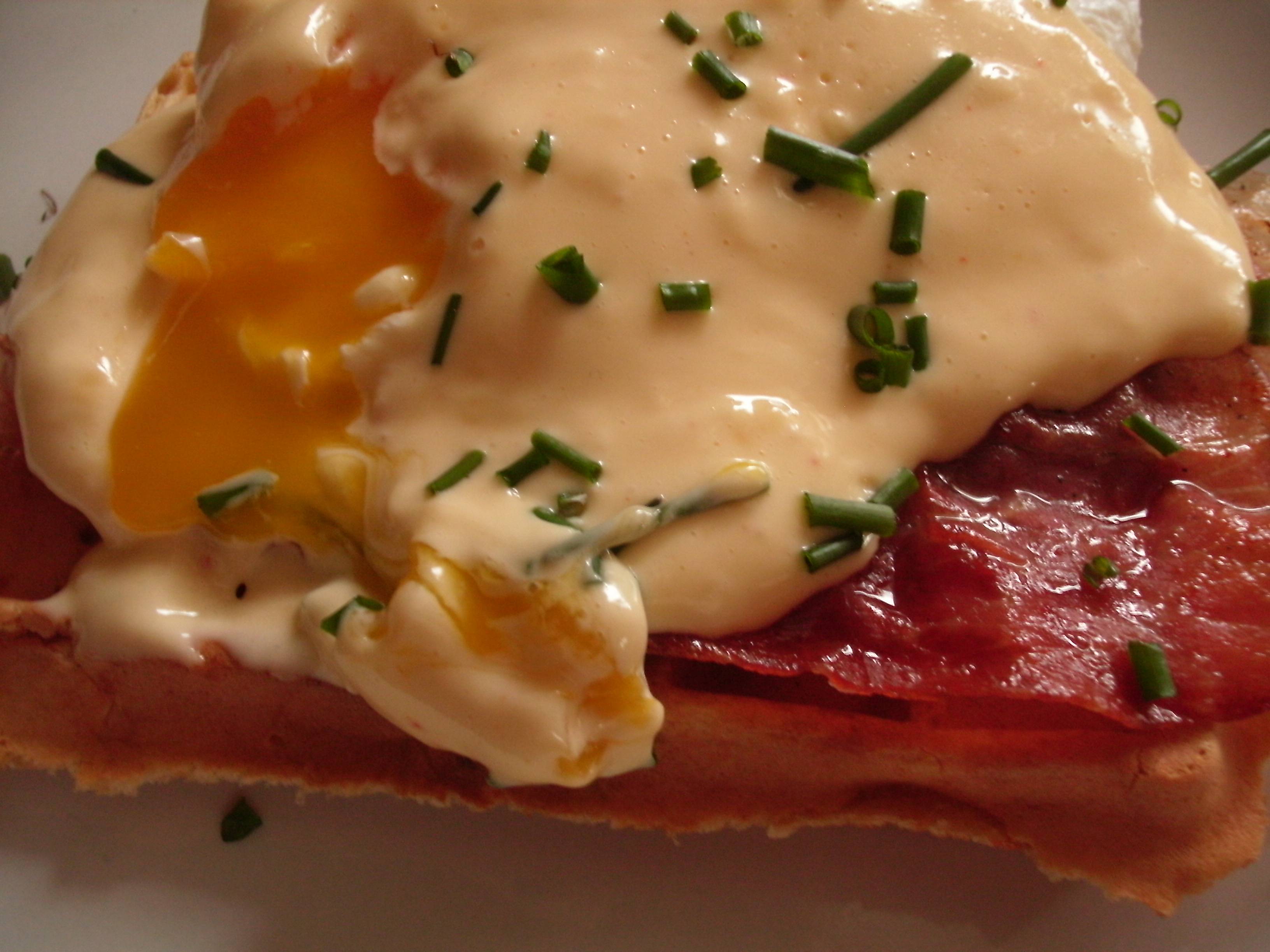
-
 7
7
-
-
5 hours ago, paulraphael said:
That's the folk wisdom, but it doesn't turn out to be a big deal. The amount of thermal mass of the air in the fridge is minute ... it takes very little energy to chill a few cubic feet of air from room temperature to 30-something.
If you calculate the thermal mass, of say, 20 cubic feet of air, and look at the amount of energy it takes to raise it from 4°C to 22°C, it's equal to 0.0004 kilowatt hours. If you assume a refrigerator isn't that efficient, and takes twice as much energy to cool that air back the other way, you've got .0008 kwh. At our current price of 19.2 cents per kwh in NYC, this is 0.015¢ to open the door and let out every molecule of cold air.
So it should go without saying that it makes no difference if you open the door for 5 seconds or half a minute. You use more energy putting in a jug of room temperature water and letting the fridge cool it.
That is the long way around to what I was saying , but yes the time to really save on energy when it comes to fridges and freezers, is when you buy them. Buy the most efficient unit you can afford, and after that just use it whatever way you normally would. https://www.energystar.gov/products/appliances/refrigerators
-
I think the only benefit is that a smaller amount of warm air is allowed to enter the unit if it is kept full, applies to upright models obviously. As cold air drops out the bottom warm air is drawn in, and has to be cooled down once the door is closed. If you have an EnergyStar Rated appliance I really wouldn't worry about the minimal savings you would get unless you are opening and closing your fridge excessively .
-
 2
2
-
-
-
A lot of pro bakers use emulsions instead of extracts, some are flavoured naturally ,some artificial some a mix of both, but they stand up better than both natural and artificial extracts in my experience . Eating that is, my wife is the baker(serious amateur/hobbyist), but since she switched to using emulsions the difference is notable. I think she must have a dozen different flavours by now.
-
 1
1
-
-
On 14/03/2017 at 1:01 PM, paulraphael said:
According to the CDC, trichinosis infections have been dwindling close to zero in the U.S. Between 2008 and 2012, there was a median of 15 cases per year in the country. 10 of these were related to commercial pork. This means one case per 3 million people. Bear meat and venison seem to be more worrisome.
Compare with annual deaths by lightning: you're almost 4 times as likely to DIE from a lightning strike as you are to be infected by trichinosis from commercial pork.
Which still isn't a zero. If you're worried about it, you have the option to completely kill trichina without completely killing your pork chop. The easiest way is sous-vide. According to research done by Modernist Cuisine, holding pork at 130°F / 54.4°C for 112 minutes (very pink!) will do it. So will holding it at 140° / 60°C for 12 minutes (respectably medium). This is a rare case where the research points to times that are even more conservative than government regulations—the USDA says hold at 130°F for 60 minutes, 140°F for one minute.
As far as killing the usual pathogens, pork is no different from beef. The whole idea that it has to be well-done is just old mythology.
One example where organic more problematic than standard commercial
. https://www.cdc.gov/mmwr/preview/mmwrhtml/ss6401a1.htm
"The number of swine reared in organic livestock operations certified by the U.S. Department of Agriculture (USDA) increased from 482 in 1997 to 12,373 in 2011 (25). Swine reared by these methods are likely exposed to sylvatic (i.e., occurring in or affecting wild animals) and synanthropic (i.e., ecologically associated with humans) hosts of Trichinella and are therefore more likely to be infected with Trichinella than commercial pork raised in confinement buildings under biosecure condition"
If you read through the rest of that page , venison is much less of a risk than even standard commercial pork .
Generally omnivores and carnivores are the main concern.
It is a pet peeve of mine when I see these celebrity chefs recommending organic or free range pork and then recommending lower finish temps based on pork being safer these days.
They need to explain that if you are using organic pork you need to be very accurate with finish temps and resting if you are going for the low end of recommended finish temp.
-
 1
1
-
-


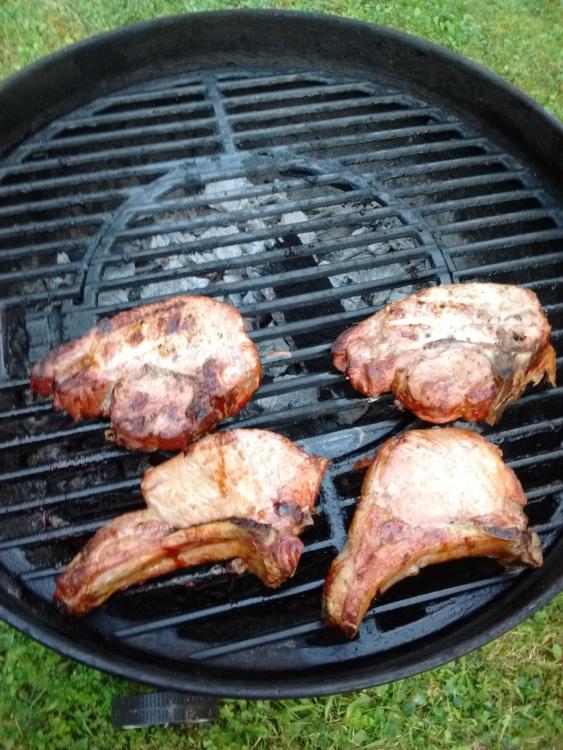

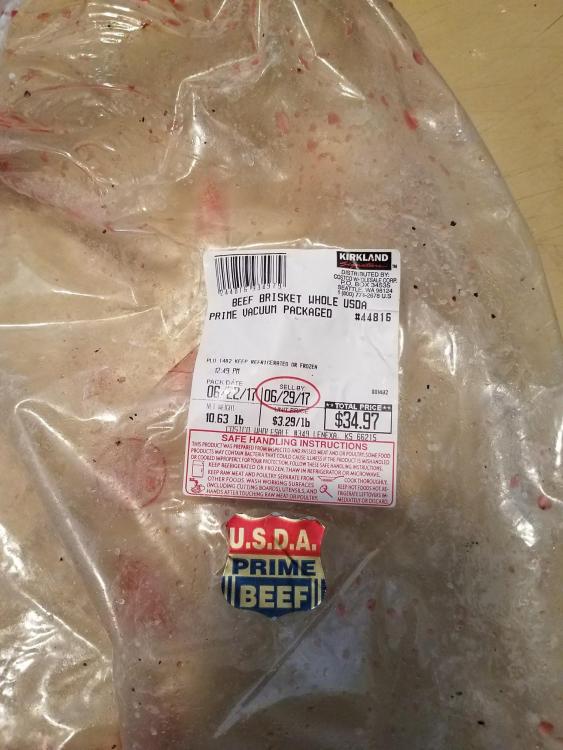
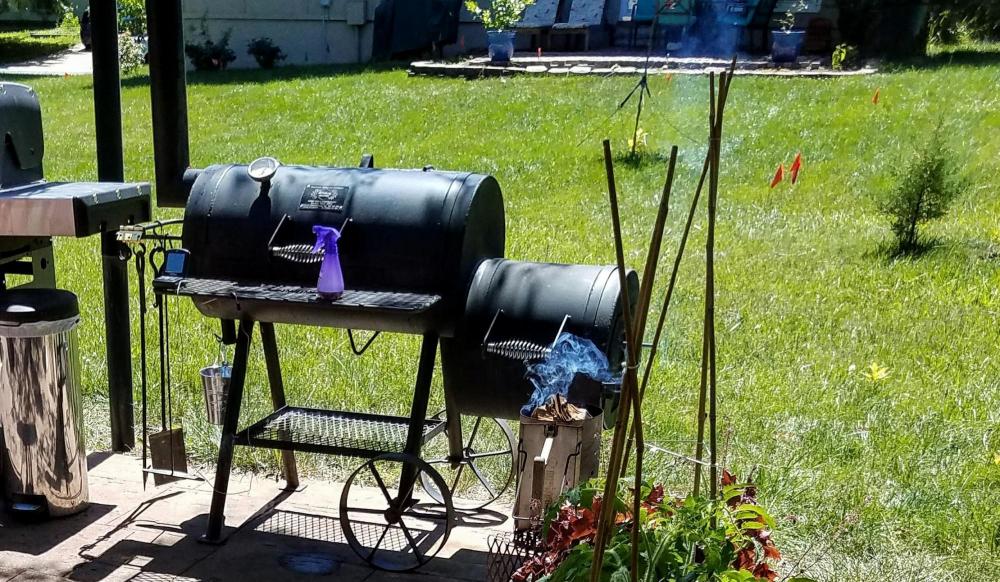
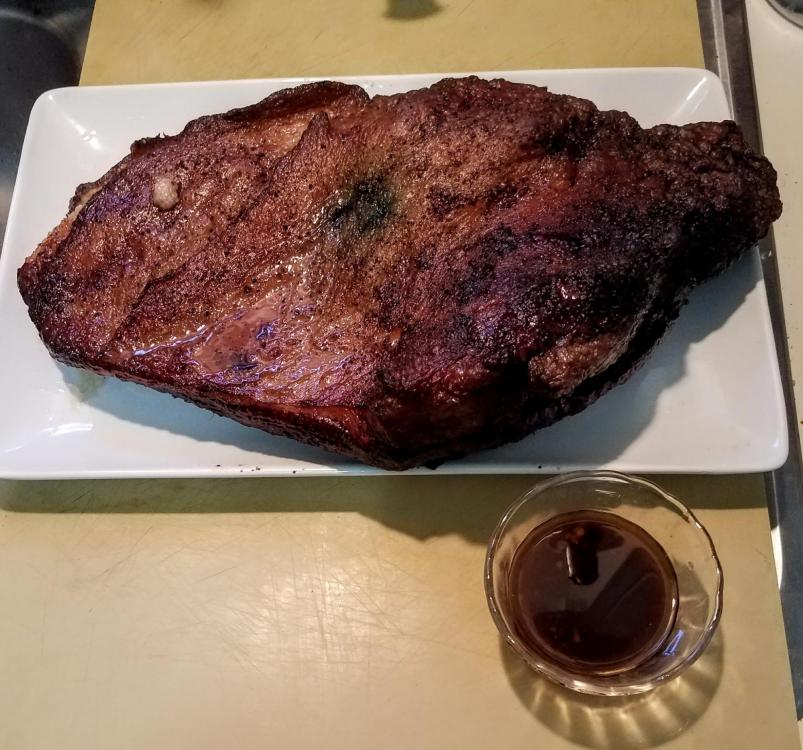


Breakfast! 2017 (Part 2)
in Cooking
Posted
Have you put Crystal hot sauce on it?
HC's breakfast posts made me buy a bottle, now I am hooked on the stuff.. I use it like a tangy salt element. It is the second best Louisiana style hot sauce I have tasted and certainly best for the money. I can't get kaitaia fire hot sauce from NZ around here anymore and when I could it was more than 10x as expensive and only slightly better for my taste.